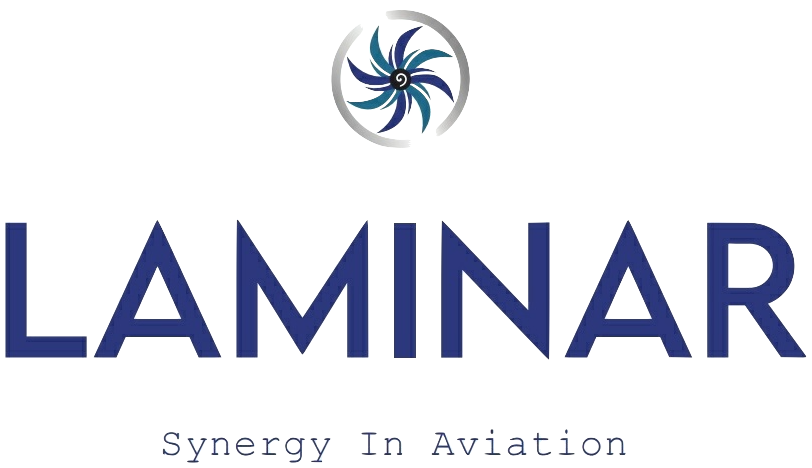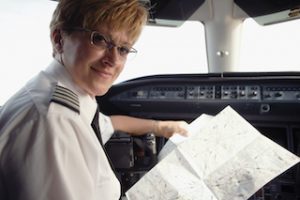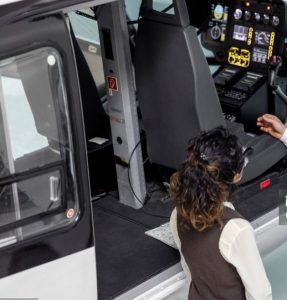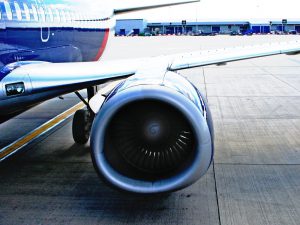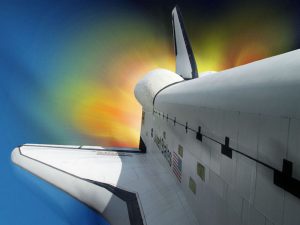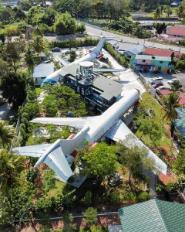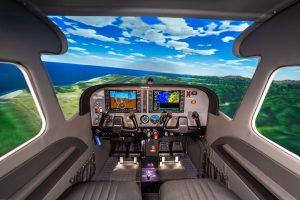How To Become A Commercial Pilot
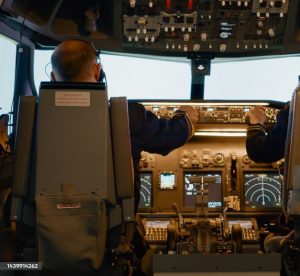 Becoming a commercial pilot is a dream for many aviation enthusiasts. However, the path to achieving this goal requires dedication, rigorous training, and strategic planning. For self-sponsored pilots, navigating the journey can be challenging but highly rewarding. This article provides an in-depth, step-by-step guide on how to become a commercial pilot, highlighting the essential qualifications, advanced training programs, and career development pathways that can lead to successful employment and career advancement in the aviation industry.
Becoming a commercial pilot is a dream for many aviation enthusiasts. However, the path to achieving this goal requires dedication, rigorous training, and strategic planning. For self-sponsored pilots, navigating the journey can be challenging but highly rewarding. This article provides an in-depth, step-by-step guide on how to become a commercial pilot, highlighting the essential qualifications, advanced training programs, and career development pathways that can lead to successful employment and career advancement in the aviation industry.
Step 1: Obtain basic qualifications
The first step towards becoming a commercial pilot involves obtaining the foundational licenses and ratings. This stage is crucial as it equips aspiring pilots with the essential skills and knowledge needed to advance in their training.
Private Pilot License (PPL)
The journey begins with obtaining a Private Pilot License (PPL). This license allows individuals to fly an aircraft privately, without compensation. The PPL is the first official step in a pilot’s career and requires the following:
-
- Eligibility: Candidates must be at least 17 years old and possess a valid medical certificate.
- Ground school: Completing ground school courses that cover aerodynamics, navigation, meteorology, and aviation regulations.
- Flight training: Accumulating a minimum of 40 flight hours, including solo flights and cross-country navigation.
- Examinations: Passing both a written knowledge test and a practical flight test with an FAA-certified examiner.
Commercial Pilot License (CPL)
After obtaining a PPL, the next step is to earn a Commercial Pilot License (CPL). The CPL allows pilots to be compensated for their flying services and is essential for those seeking a career in aviation. Requirements for a CPL include:
-
- Age and medical requirements: Candidates must be at least 18 years old and hold a second-class medical certificate.
- Flight hours: Accumulating at least 250 total flight hours, including specific requirements for cross-country, night, and instrument flying.
- Ground school: Completing advanced ground school courses covering topics such as complex aircraft systems, advanced navigation, and flight planning.
- Examinations: Passing a written knowledge test and a practical flight test with an FAA-certified examiner.
Instrument Rating (IR)
An Instrument Rating (IR) is essential for commercial pilots as it allows them to fly in various weather conditions and rely on instruments for navigation. Obtaining an IR involves:
-
- Prerequisites: Holding at least a PPL and a third-class medical certificate.
- Ground school: Completing ground school training focused on instrument flight rules (IFR), instrument navigation, and meteorology.
- Flight training: Accumulating at least 40 hours of instrument flight time, including simulated instrument conditions and cross-country flights.
- Examinations: Passing a written knowledge test and a practical flight test with an FAA-certified examiner.
Multi-Engine Rating (MER)
A Multi-Engine Rating (MER) allows pilots to operate aircraft with more than one engine. This rating is crucial for those aspiring to fly commercial airliners. Requirements for an MER include:
-
- Prerequisites: Holding at least a PPL and a valid medical certificate.
- Ground school: Completing ground school training focused on multi-engine aerodynamics, systems, and emergency procedures.
- Flight training: Accumulating a specific number of flight hours in multi-engine aircraft, including training in engine-out procedures.
- Examinations: Passing a practical flight test with an FAA-certified examiner.
Step 2: Complete MCC, APS, and JOC Training
After obtaining the basic qualifications, pilots should enroll in advanced training programs such as the Multi-Crew Cooperation (MCC) course, the Airline Pilot Standard (APS) course, and the Jet Orientation Course (JOC). These programs provide specialised training essential for modern airline operations.
Multi-Crew Cooperation (MCC) course
The MCC course is designed to prepare pilots for the multi-crew environment of commercial airline operations. This course emphasises effective communication, teamwork, and Crew Resource Management (CRM).
-
- Objective: Develop the skills necessary for pilots to operate efficiently and safely as part of a multi-crew team.
- Curriculum: Includes theoretical instruction on CRM principles, standard operating procedures (SOPs), and practical training using flight simulators to practice multi-crew coordination and emergency procedures.
Airline Pilot Standard (APS) course
The APS course builds on the foundation provided by the MCC course, offering advanced training in jet aircraft operations. It is designed to enhance a pilot’s readiness for the complexities of airline operations.
-
- Objective: Prepare pilots for the demanding environment of airline operations, focusing on advanced CRM skills, jet aircraft systems, and high-speed aerodynamics.
- Curriculum: Includes detailed theoretical instruction on advanced CRM, jet systems, and international regulations, along with extensive simulator training in realistic flight scenarios.
Jet Orientation Course (JOC)
The JOC is specifically tailored for pilots transitioning from propeller-driven aircraft to jet aircraft. It focuses on the unique handling characteristics and operational requirements of jets.
-
- Objective: Equip pilots with the essential skills and knowledge needed to operate jet aircraft safely and efficiently.
- Curriculum: Covers jet aerodynamics, engine performance, advanced flight planning, and extensive practical training using jet flight simulators.
Step 3: Gain experience
Gaining experience is a crucial step in a pilot’s career development. Building flight hours and gaining practical experience in various operational environments enhances a pilot’s skills and employability.
Flight instructor
One common pathway to gaining experience is working as a flight instructor. This role allows pilots to accumulate flight hours while teaching new students. The experience gained as a flight instructor is invaluable and provides a deeper understanding of flight dynamics and instructional techniques.
Charter Pilot
Working as a charter pilot is another excellent way to gain experience. Charter pilots operate non-scheduled flights, often in diverse conditions and locations, providing valuable experience in different operational environments.
Other commercial aviation roles
Pilots can also gain experience by working in other commercial aviation roles, such as aerial surveying, agricultural aviation, or corporate aviation. These roles offer unique challenges and opportunities to build flight hours and gain practical experience.
Step 4: Apply for airline positions
With advanced training and experience, pilots can apply for positions with regional and international airlines. Having MCC, APS, and JOC certifications will make them highly competitive candidates.
Regional airlines
Starting with regional airlines is a common pathway for many pilots. These airlines operate smaller aircraft and shorter routes, providing an excellent opportunity for pilots to gain airline experience and build flight hours.
International airlines
With sufficient experience and advanced training, pilots can apply for positions with major international airlines. These airlines operate larger aircraft on long-haul routes, offering higher salaries and more career advancement opportunities.
Step 5: Continuous professional development
Aviation is a dynamic industry, and continuous professional development is essential for career advancement. Pilots should stay updated with industry trends, regulations, and advancements in technology. Pursuing additional certifications and training can further enhance career prospects.
Industry trends and regulations
Staying informed about industry trends and regulatory changes is crucial for pilots. This includes keeping up with new technologies, safety procedures, and changes in airspace regulations.
Additional certifications and training
Pursuing additional certifications and training can enhance a pilot’s skills and career prospects. This can include type ratings for specific aircraft, advanced CRM training, and specialised courses in areas such as aviation safety or flight operations management.
Become a pilot in 5 steps
Becoming a commercial pilot is a challenging but rewarding journey that requires dedication, rigorous training, and strategic planning. For self-sponsored pilots, navigating this path involves obtaining basic qualifications, completing advanced training programs like MCC, APS, and JOC, gaining experience in various operational environments, applying for airline positions, and engaging in continuous professional development.
The demand for qualified pilots is strong, and those who follow the correct career developmental pathways are well-positioned for successful employment and career advancement. With the right training, experience, and dedication, aspiring pilots can achieve their dream of flying for regional and international airlines, embarking on a fulfilling career in the dynamic and exciting field of aviation.
